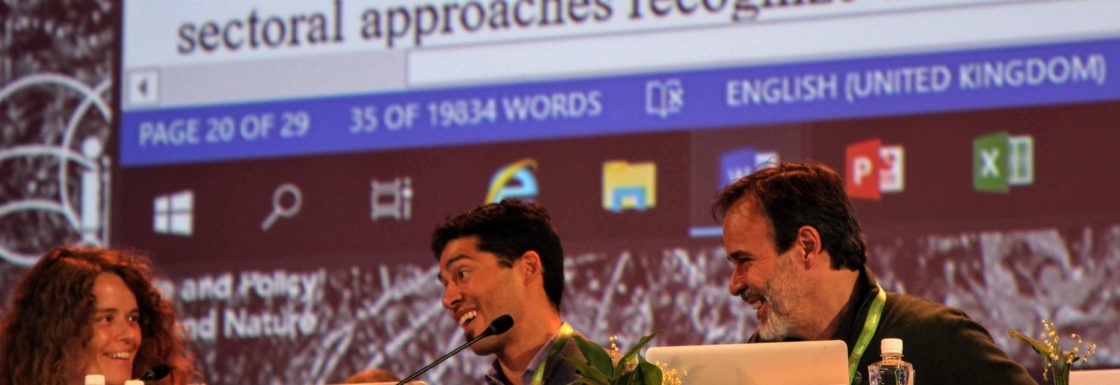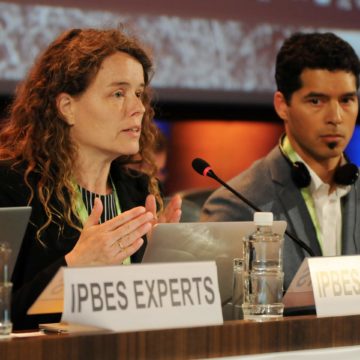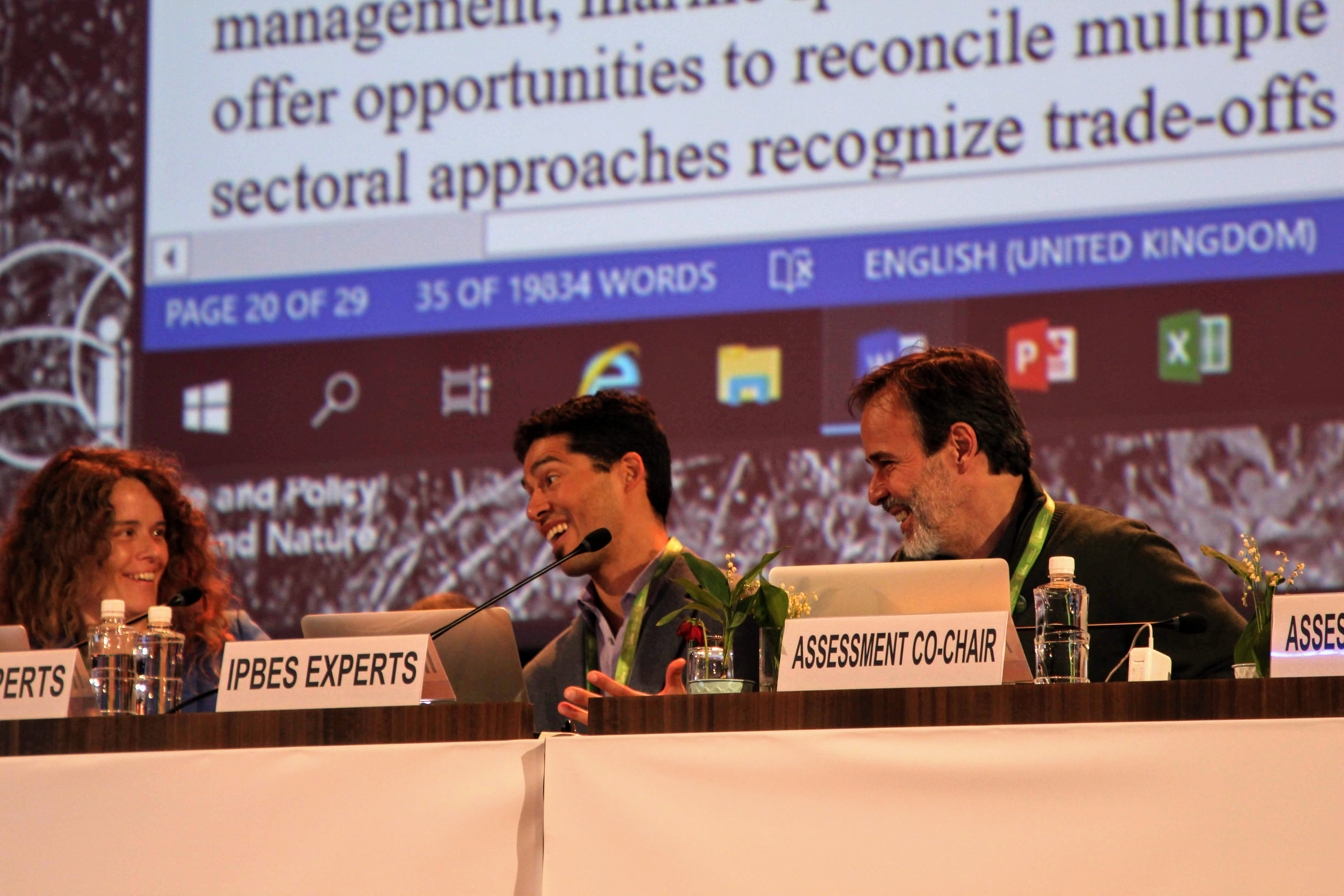IRES, University of British Columbia & IPBES Secretariat: Charting Pathways

Projects Sponsor
The agenda that emerged from the Charting Pathways to Sustainable Futures project was ultimately endorsed by 132 member nations (a project of the Intergovernmental Science-Policy Platform on Biodiversity and Ecosystem Services (IPBES) with substantial involvement from the University of British Columbia’s Institute for Resources, Environment and Sustainability). Securing that kind of consensus would be a significant achievement with even a simple project, but the scope of the Charting Pathways to Sustainable Futures programme is staggering. Indeed, it is the most comprehensive global analysis of the challenge of mitigating climate, feeding humanity, resourcing cities—all while maintaining freshwater supplies and life on land and in the water—ever proposed, and someone had to rise to the occasion and do it.
Someone had to do it because, as human societies grow, the choice to address some societal goals involves the risk of undermining others and a way must be found to achieve key global goals together. As companies and governments come to grips with the challenge of climate change, there is a real risk that climate change mitigation may displace key agricultural production and habitat for wildlife, while exacerbating water shortages and other ecological problems.
Similarly, as humanity collectively intensifies and expands agricultural production to feed a growing population, we create and exacerbate problems elsewhere in the form of polluted waters, algal blooms, and degraded coral reefs and coastal ecosystems.
The Charting Pathways to Sustainable Futures project sought not only to characterize the various courses of action that will be needed in order to achieve these goals, but to identify key actions that would unlock these possibilities.
There are so many players here, so many moving parts and the stakes are very high. What was required was a monumental team effort. The initial team consisted of 3 coordinating lead authors (Kai M. A. Chan, John Agard, and Jianguo Liu), 16 lead authors, 3 fellows, and a review editor, all overseen by three co-chairs and the IPBES Secretariat. Because of the expansive task, it was soon realized that they needed to fill key gaps by adding an additional 19 contributing authors.
Coordinating said team presented many obstacles that had to be overcome if the project was going to get off the ground. The broadly international group of extremely busy people had to meet four times in person over three years, for example, and beyond the logistical issues, the members all had very different disciplinary backgrounds and areas of expertise. This meant ongoing conversations about appropriate methods, and even the nature of evidence.
The question was effectively, “How can we achieve sustainability while balancing many human needs?” To find answers, the team used what’s called “an iterative expert input process”, supplemented with several literature reviews. Experts were independently solicited to provide a comprehensive list of these levers and leverage points for global sustainability, and the collection of all responses became the initial set. This initial set was further informed by literature reviews across five linked conceptions of transformative change as determined by the experts.
Once this initial set of levers and leverage points had been determined, two processes were conducted in parallel: systematic literature reviews of intervention scenarios at multiple scales to derive information about pathways; and expert-led literature reviews on social and institutional change and conceptions of change (in the context of sustainability), particularly focused on preliminary levers and leverage points (e.g., consumption).
This was followed by 3 rounds of peer review after each of which, the expert authors were tasked with comprehensively responding to the reviews and to modify their text. Between iterations the list of levers and leverage points was refined and the authors of the reviews were tasked with revisiting the text given the revised levers and leverage points. This process of iterative expert review was conducted over email, designed to minimize common expert biases such as dominance, overconfidence, framing effects, and linguistic uncertainty.
Through this careful process the team was able to pinpoint a roadmap to global sustainability. Key within this is a suite of levers (governance interventions, such as reforming subsidies and incentives) and leverage points (priority points to intervene, such as total consumption and waste), and how they fit together to effect transformative change. Their agenda for change, the pathways mapped out, now with those 132 member nations on board for the journey, produced a hard-hitting message that has been heard all over the world. Clearly, much work remains to be done to realize this trajectory, but at least now there is a clear path forward.
















